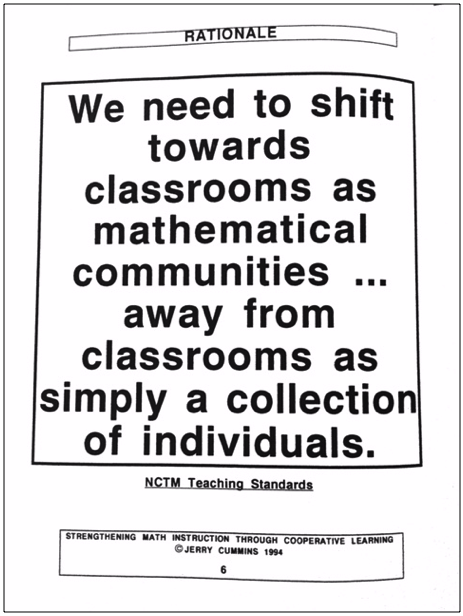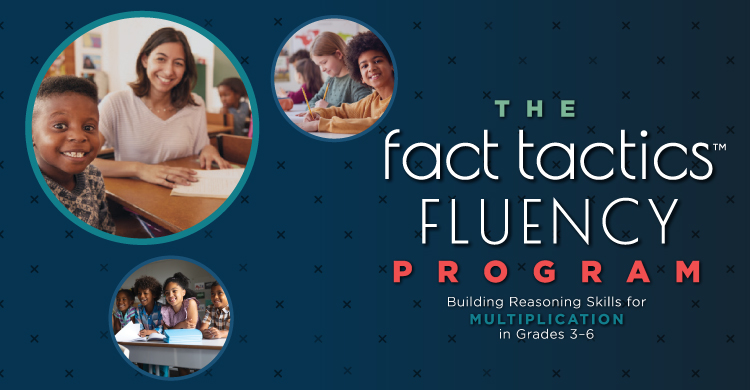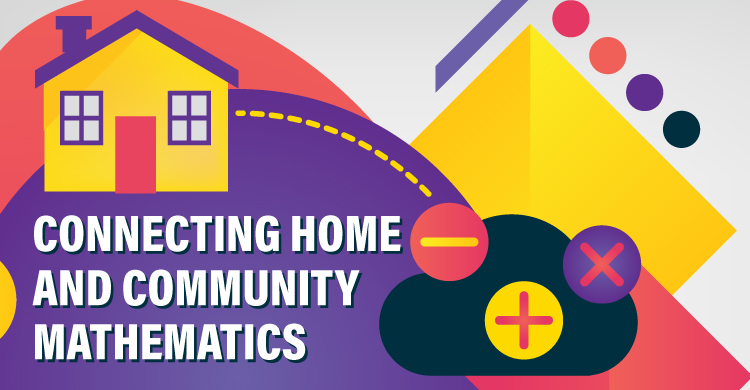During the last three #mathmonday blogs, we have explored how to set up a mathematics community of learners. We started with classroom culture, and then we examined setting up routines, procedures, and roles. We also discussed intentional lesson design from the student’s perspective to ensure that every student has a voice in the learning. The last portion of learning is tied to individual accountability—how do we make sure there are no hitchhikers at the end of the unit?
Notice I said at the end of the unit, not at the end of the day. Think about the last lesson you taught—did everyone master the learning at the end of the day? I could always tell that there were some students who were “not there yet” at the end of the lesson. The joy of mathematics is that most likely we will revisit that concept in the next few lessons or units. I learned from Jerry Cummins that if we truly have a community of learners, not everyone is at the same place at the same time. When we have student teams, we value that the learning rate is variable and that accountability is constant.
(4) Hitchhikers
Think back to my Jeopardy example. My “before” example is a perfect non-example of individual accountability. A team could get the correct response and hitchhikers were allowed to “ride along” with the correct response from one team member with absolutely no knowledge of the solution or strategy. When building a community of learners, we have to pay attention to how we ensure individual accountability.
- Hitchhikers: Everyone is a hitchhiker at one point or another in a community of learners. I remember working with a group of students in college on a project and the idea for the project stemmed from one team member. We ran with the idea and all added our own thoughts, but the initial thinking came from one member. Now, if we had let the one person do all of the work, complete the research, and not add anything to the project, we would have been fully hitchhiking and probably resented throughout the process. The key is to make each person accountable for the learning.
- Accountability: To ensure that everyone participates and is held accountable for their portion of the community, create a balance between community work and individual work. The “three stay-one stray” method was one of my favorite instructional strategies that balanced both team and individual work. I would have teams of four complete a task or problem set. They would all work together to complete the task, create a solution pathway, and collectively justify their reasoning. Then, I would use a random number generator and call on one person from each team and they were responsible for straying to another team to share their team’s response. Sometimes the tasks were the same, but my favorite was when each group had a different task. Amazing conversations erupted when the new team members shared different strategies and the other teams had to make connections to their solution or strategy.
This month I have shared the beginning steps to building a community of learners, where students are fully engaged in the learning. These are truly just snippets to assist you with developing your own favorites that work with your students on your pathway to a well-established community of learners.
This month’s #mathmondays are dedicated to a man who truly influenced my career. At the time, I had no idea that one day of learning with Jerry Cummins would make such an impact on me and for my students. I also did not know that ten years later I would get to work with him as a colleague when I became a mathematics specialist and he was a consultant in my district. I also began working with him across the country doing onsite coaching, supporting teachers and teacher teams in meeting their vision for high-quality instruction. When I wrote these blogs in December, Jerry Cummins was residing in an Alzheimer’s center and living at the most acute stage-seven of the disease. He passed away January 13, 2016, and these blogs reflect how I choose to honor him and the impact he had on my career: by continuing Jerry’s legacy that every student deserves to be part of an effective community of learners.
[author_bio id=”295″]







